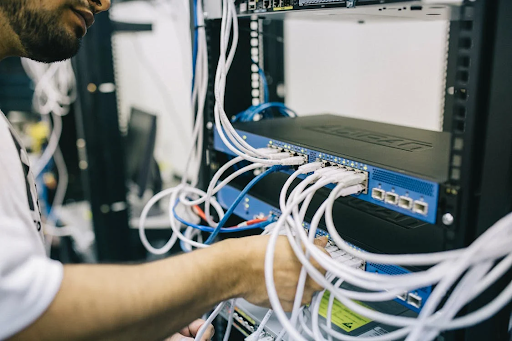Selecting the proper servers for a company’s needs is a difficult process despite their centrality to the company’s IT network. Making poor choices on IT infrastructure can waste time and money by resulting in the purchase of unneeded servers or other hardware.
It might be overwhelming to consider all of the available server types, components, and networking choices, especially for newer or smaller businesses. Yet there are ways to make the transition easier with the correct help and knowledge. There are a few important factors to consider before committing to a certain plan for your IT infrastructure development or upgrade.

Understand Your Server Needs
Determining what processes must be executed on the server is the first stage in constructing an IT architecture. You’ll be making a substantial mistake if you consider just your priorities instead of thinking about the future of your business. For example, if you plan on expanding your business substantially in the next year or two, make sure to include that plan in the company’s projected growth rate.
You can spend some time with your management team and get their insight on your business growth plans to ensure you’re on the right path, and not costing your company more than you should. The cost of expanding a local data center by adding more servers can rise dramatically. It can cost anything from $3K and $15K per server, including installation.
Next, you’ll need an estimate of how much kWh, RAM, and storage your server will require. This information will help you determine which server fits your company’s needs.
Create a Budget
The size of your IT budget should be based on the complexity of the IT projects your organization must complete. The more complicated the job, the greater the budget should be. Because of the high price tag of adding more servers to data centers, it is crucial that you thoroughly consider your long-term job needs.
However, be careful. Although it’s tempting for organizations to invest in the most powerful servers available, doing so may not be necessary depending on the size of their workload. In the end, this results in wasted funds due to the excessive use of energy to run the more complex devices. If money is short, another option is to purchase used servers rather than brand-new ones. These reconditioned servers are a far cheaper alternative to buying new ones, yet they perform just as well.
Keep Maintenance and Server Placement in Mind
Location is another essential factor to think about when picking the best server for your company. If you consider keeping your server on-site, you’ll need to make sure you have where to store it as well as competent IT staff that will regularly maintain it. You also need to consider if the area is enough to function as a server room or closet since servers can be loud and pose a security concern if not housed securely.
For small and medium-sized businesses, on-site data centers can be more effective in terms of cost. Although avoiding data center maintenance fees can be an advantage of on-premises storage, it comes at the expense of increased electricity use and maybe overtime for staff.
Choose Your Server Type
Next is choosing the actual type of server that would work best for your company. Blade, rack, and tower servers are the three primary forms of server hardware. Since the internal components of servers are often of similar design, it is important to plan for long-term server requirements in order to eliminate any hurdles to scaling in the future.
Rack servers are standardized servers that are housed on racks, and can be stacked in metal enclosures for simple administration.
Blade servers are compact alternatives to rack servers that use just modular circuit boards to house the server’s central processing unit (CPU), internal memory, and network management. Some blade servers, however, come equipped with storage disks that can be utilized in place of a SAN or NAS.
Tower servers are rack-configured servers that are self-contained and have few moving parts and flexible software to meet specialized requirements. Though it may lack high-end graphics, memory, or other components, it gives access to user-defined settings, making it perfect for network-related matters, or as a web server.
With careful consideration to cost, the system needs, long-term company goals, and geographic considerations, selecting the appropriate physical server type should be a breeze.

Final Thoughts
Before settling on a set of servers for your business, it is important to carry out exhaustive research and investigate the available options in the market. You can maximize your business’s potential and expand sustainably if you invest in high-quality servers and a dependable service provider.
Interesting Related Article: “Why Server Backups Are Critical for Your Organization“

